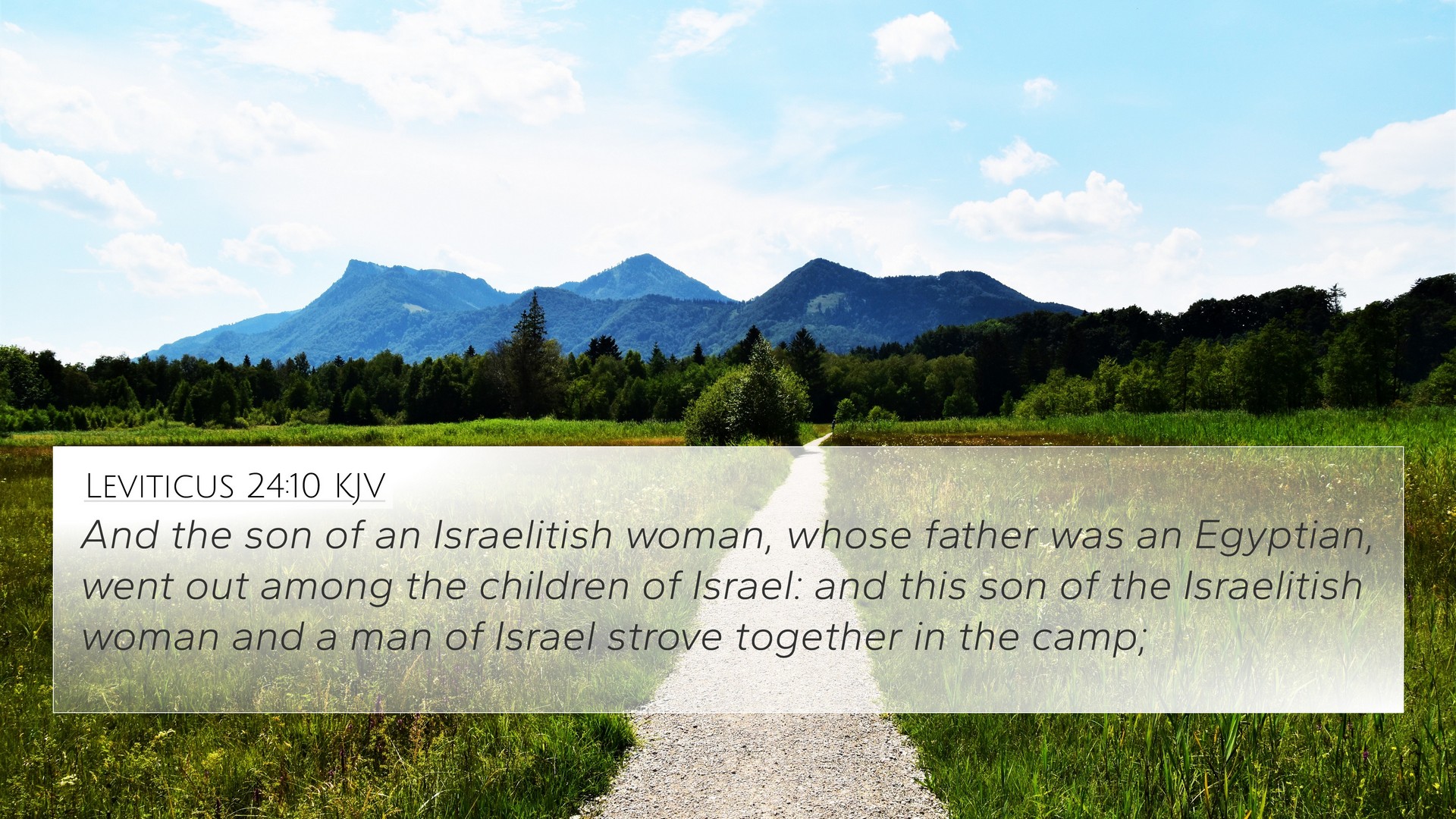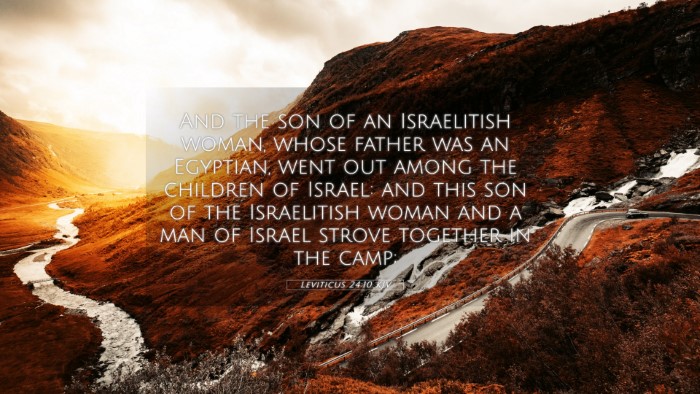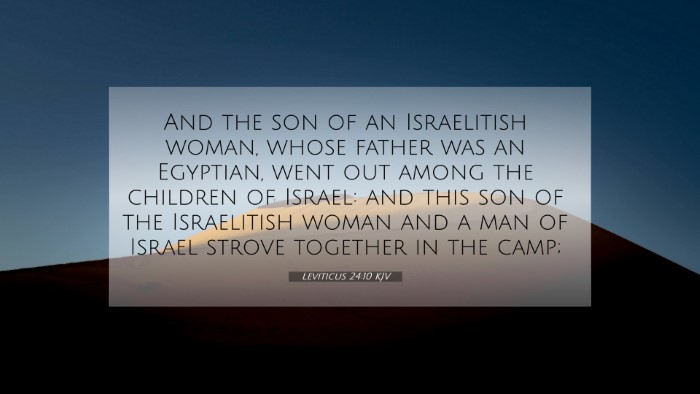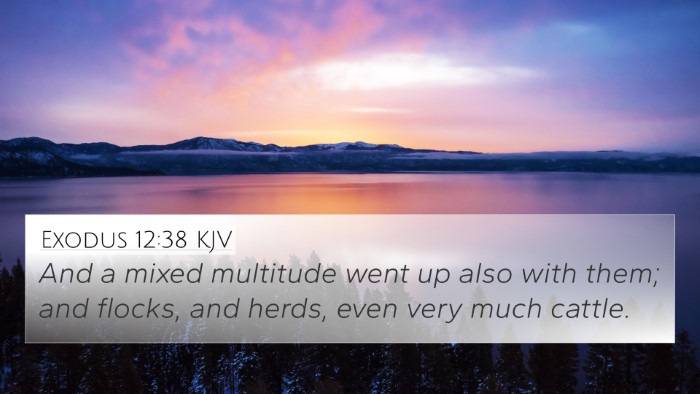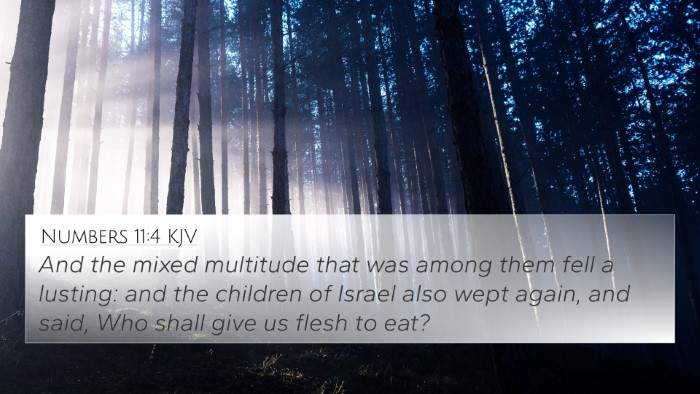Understanding Leviticus 24:10:
Leviticus 24:10 states, "And the son of an Israelite woman, whose father was an Egyptian, went out among the children of Israel; and this son of the Israelite woman and a man of Israel strove together in the camp." This verse begins to tell the story of a specific incident that has implications for the community and the laws that govern them.
Contextual Analysis:
This scripture is situated in a set of laws concerning holy and sacred matters including blasphemy and the treatment of God's name. The incident described highlights the complexities of belonging and identity within the Israelite community. The mention of an "Israelite woman" and an "Egyptian father" suggests themes of mixed heritage and the social dynamics of ancient Israel.
Insights from Commentaries:
- Matthew Henry: Henry notes the significance of the identity of the individuals involved in this strife. He emphasizes how their backgrounds could lead to tension within the community. The clash serves as a reminder of the importance of law and order in the camp of Israel.
- Albert Barnes: Barnes comments on the implications of this mixed heritage. He suggests that the presence of a non-Israelite parent could lead to social challenges and breaches in community relations. This sheds light on the need for the Israelite community to maintain its distinctiveness.
- Adam Clarke: Clarke discusses the broader significance of this narrative. He sees it as a teaching moment about the consequences of sin and the necessity for all members, regardless of heritage, to adhere to community laws. Clarke stresses the importance of a unified community structure in spiritual and social matters.
Biblical Cross-References:
- Exodus 12:38 - Highlights the diverse backgrounds of those who followed Moses out of Egypt, showcasing a history of mixed communities.
- Numbers 15:14-16 - Discusses the applicability of laws to both native Israelites and those who dwell among them, emphasizing inclusivity under the Law.
- Deuteronomy 23:7 - Provides instructions regarding Ammonites and Moabites, noting concerns around integration and community purity.
- John 4:9 - The interaction between Jesus and the Samaritan woman emphasizes cultural and racial tensions, akin to those faced in Leviticus.
- Galatians 3:28 - Proclaims that there is neither Jew nor Gentile, uniting all believers in Christ, which contrasts with the ethnic divisions presented here.
- James 2:1 - Warns against favoritism, reinforcing community bonds regardless of social background.
- Colossians 3:11 - Reinforces the idea that Christ transcends ethnic divisions, a suitable reflection on the tensions in Leviticus.
Thematic Connections:
The conflict between the son of the Israelite woman and the Israelite man reflects deeper themes of community, identity, and the overarching need for love and respect among individuals regardless of their backgrounds. This narrative serves as a reminder of the challenges faced by a community trying to uphold its values while including a diverse membership.
In exploring connections between biblical texts, we see that many scriptures address the inclusivity versus exclusivity of community membership. By examining these links, we better understand God’s intention for the unity of His people.
Conclusion:
Leviticus 24:10 serves as a critical junction where laws about community, identity, and holiness converge. Through the lens of various commentaries and cross-referencing other scriptures, we derive a rich understanding of the dynamics at play in the Israelite community and how these themes are echoed throughout the Bible. The connections to other verses illustrate the continuity of biblical teaching across different contexts and periods.
